What is Driving OpenStack Adoption in 2016?
2016 User Survey Says the Top Business Driver is “Save Money”
Just like in theFall 2015 user survey, the top business driver for choosing OpenStack is to “Save money over alternative infrastructure choices.” This could be savings over public cloud alternatives, or could be savings over legacy IT infrastructure technologies. Either way, to demonstrate that the OpenStack cloud is actually saving the organization money, the operator has to be able to assess and track the cost of cloud services delivered from that Openstack cloud environment.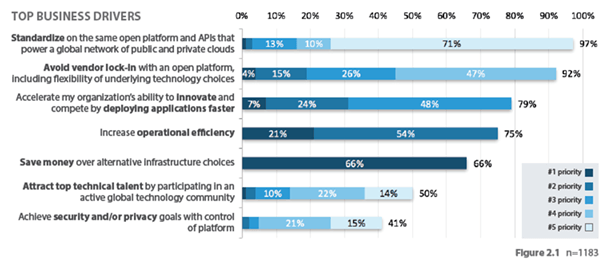 There has been a big rush to public clouds over the last few years, partially due to the ease of provisioning resources and the ability to quickly spin up or down according to project requirements. As public cloud consumption has grown, the expense is now a real and material cost to the organization. For larger organizations, public cloud expenses are no longer distributed at the individual developer level where they were more easily expensed, but have reached the point where 3rd party tools are required to provide visibility and budget tracking across the entire organization.
There has been a big rush to public clouds over the last few years, partially due to the ease of provisioning resources and the ability to quickly spin up or down according to project requirements. As public cloud consumption has grown, the expense is now a real and material cost to the organization. For larger organizations, public cloud expenses are no longer distributed at the individual developer level where they were more easily expensed, but have reached the point where 3rd party tools are required to provide visibility and budget tracking across the entire organization.At the same time that public cloud adoption has taken off, the OpenStack platform has matured and deployment and management burdens have eased. A similarly responsive IT service delivery experience can be provided behind the firewall at a fraction of the cost, and the growth in the number of organizations using OpenStack in production proves it.
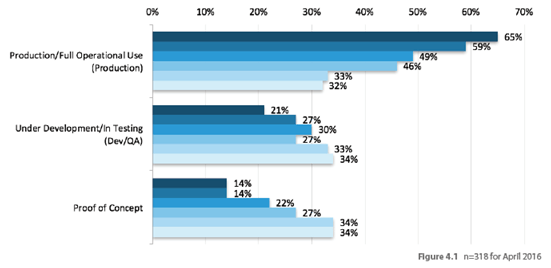 This motivation for cost savings mirrors what Taligent uncovered in their recent survey in January 2016. The top response to the question “what is motivating you” was that “Public cloud cost is too high”, with 50% of respondents also mentioning that “Legacy IT costs are too high”.
This motivation for cost savings mirrors what Taligent uncovered in their recent survey in January 2016. The top response to the question “what is motivating you” was that “Public cloud cost is too high”, with 50% of respondents also mentioning that “Legacy IT costs are too high”. 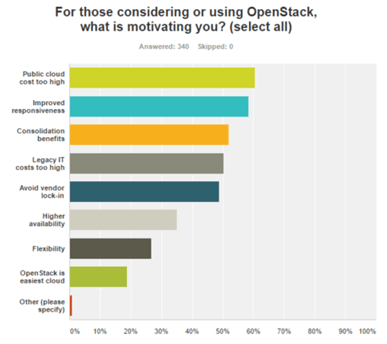 OpenStack private clouds bring the promise of lower costs and improved responsiveness (another key driver for OpenStack adoption) but executing efficiently and achieving the goal of lowering costs is tricky. OpenStack can be complicated and visibility in the native services is limited.
OpenStack private clouds bring the promise of lower costs and improved responsiveness (another key driver for OpenStack adoption) but executing efficiently and achieving the goal of lowering costs is tricky. OpenStack can be complicated and visibility in the native services is limited. Can I save with OpenStack?
If it were not possible to save with OpenStack, adoption would be much more limited, likely focused strictly on use cases where a public cloud is not an option due to security or compliance reasons (healthcare, financial services, or government). Without the cost savings, other industries and use cases would not be able to justify the expense, and would stick with legacy solutions or migrate most workloads to public clouds.Red Hat has shown that considerable costs savings can be achieved over non-OpenStack private cloud options. Similarly, Taligent has first hand experience with customers using OpenStack to provide a comparable experience to on-demand public cloud at a fraction of the cost. For a well-run OpenStack cloud, their customers have found that instance charges around ½ of a public cloud alternative will cover their expenses. Virtual instances on public clouds can initially appear inexpensive but networking and storage can easily double the cost. The capital cost of compute and storage for a private cloud can be paid back in a matter of months after a switch from public cloud services. Additional cost savings come from more flexibility in the way infrastructure is provided so that resources can be closely aligned with requirements.
Of course, your mileage may vary. As you might expect, it is highly dependent on utilization of the hardware and spreading the capital and operational costs across as many workloads as possible. Maintaining high utilization requires the just-in-time addition of new resources to support growth in the workloads running the cloud, and, just-in-time capacity planning requires clear visibility of available headspace and cloud consumption growth trends.
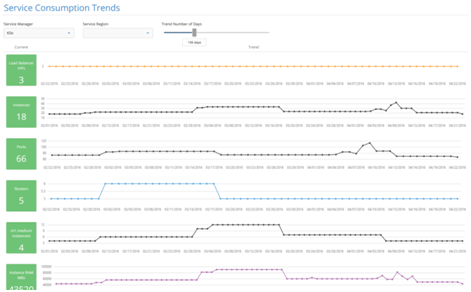
How do you know if you are saving money?
As investments in OpenStack grow and become material, understanding and tracking cloud costs becomes a critical requirement for efficient cloud management. From Talligent's recent survey, however, nearly 70% of respondents who had adopted or were evaluating OpenStack listed cost management as a top challenge.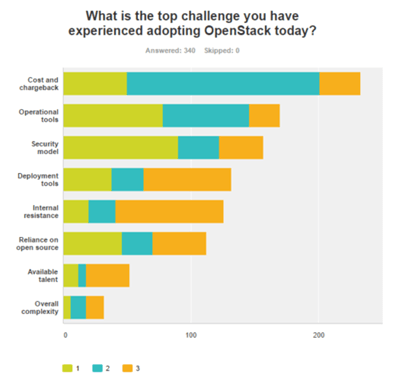 This is partly because OpenStack doesn’t natively track the costs of your cloud infrastructure or services running on top of it. The OpenStack services do not provide a history of cloud resource consumption or growth trends across tenants, making it difficult to plan consumption requirements. An OpenStack billing solution is required to collect appropriate metrics from the service APIs, provide a flexible ratings engine for cost accounting, and provide actionable capacity management insights.
This is partly because OpenStack doesn’t natively track the costs of your cloud infrastructure or services running on top of it. The OpenStack services do not provide a history of cloud resource consumption or growth trends across tenants, making it difficult to plan consumption requirements. An OpenStack billing solution is required to collect appropriate metrics from the service APIs, provide a flexible ratings engine for cost accounting, and provide actionable capacity management insights.The Public Cloud Experience
From the OpenStack User Survey, we know that app users are generally not limited to the OpenStack environment and will interact with public cloud options.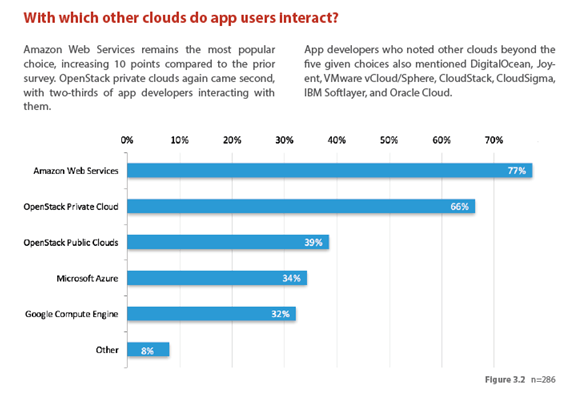 Like improved responsiveness and self-service, cost visibility is expected by cloud tenants regardless of private or public. Public cloud providers readily provide detailed cost/consumption information to your tenants. The providers are transparent with their charges, making it easy for app users to view and compare what they are spending costs between of public clouds. It is important to provide your tenants similar information for their OpenStack private cloud usage. App users need the information to make informed decisions about where to place workloads and what the impact of their decisions will be to the organization. Executives need similar visibility so that they can budget for IT infrastructure growth in the right platforms where it is needed.
Like improved responsiveness and self-service, cost visibility is expected by cloud tenants regardless of private or public. Public cloud providers readily provide detailed cost/consumption information to your tenants. The providers are transparent with their charges, making it easy for app users to view and compare what they are spending costs between of public clouds. It is important to provide your tenants similar information for their OpenStack private cloud usage. App users need the information to make informed decisions about where to place workloads and what the impact of their decisions will be to the organization. Executives need similar visibility so that they can budget for IT infrastructure growth in the right platforms where it is needed.How can private cloud demonstrate the same level of cost detail as public cloud?
In order to get detailed cost information, you'll need to add a separate service or application. One example of such an application is Talligent's Openbook, which enables operators to track costs and utilization of their OpenStack clouds, and clearly demonstrate those costs alongside the relevant costs from your AWS and VMware consumption. Other options are also available from various services.Whichever you choose, however, adding additional services to track costs isn't just a means for keeping users in line; in fact, discouraging cloud use is the opposite of what you want. It's a means for providing a more efficient, more smoothly running cloud that provides better return on investment.






